The Land Conflicted, Complicated and Consecrated
A trip to Israel and my reflections.
Sirius
6/6/202319 min read
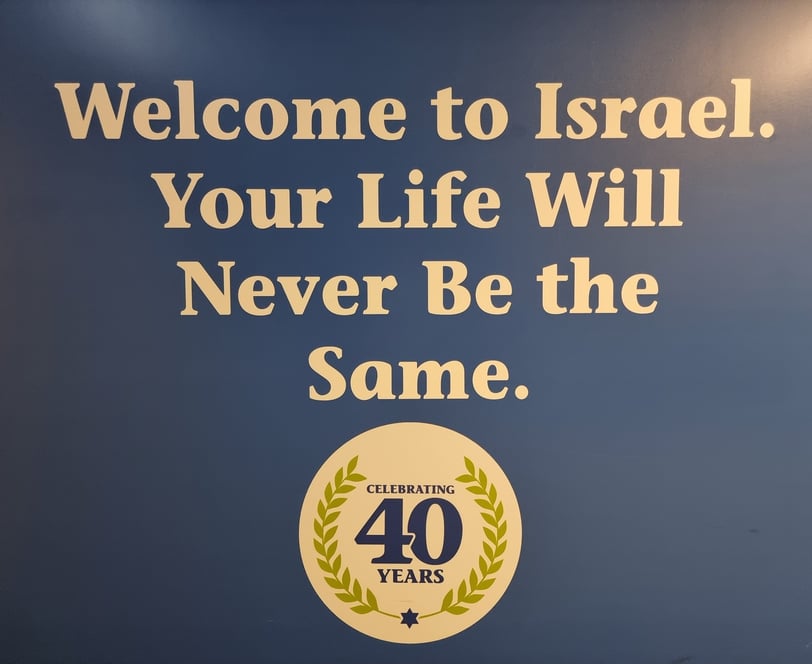

This article is originally authored in English.
中文版请点击这里.
The Road to Ramallah (or Ram Allah, meaning "God's Hils")
Entering West Bank from West Jerusalem (I am sure this reads confusing), immediately I noticed a stark contrast between their streetscapes, which, coincidentally, remind me of scenes of Lebanon - though the former is in Beirut whereas the latter is in Sour/Tyre. From a seemingly orderly Friday afternoon when queues form up at every street corner when everyone rushes to buy delis for Shabbat (Jewish sabbath, every week from sunset on Friday to sunset on Saturday), suddenly I jumped into a lively, bustling street market scene where everyone chats, bargains, quarrels and closes deals. Buildings appearred to be less maintained and streets to be less cleaned. Within little information from someone I met in a chat group, I finally reached where I was looking for, through the street laid with fresh produce, groceries, clothes and shoes and whatever tradeable, the bus stop where a bus should bring me to Ramallah, the de-facto capital of the State of Palestine.
The Road to Judea
I landed in Tel Aviv, the main international airport of Israel. A long limestone bricks hallway lead me to the arrival hall, but before I could walk out of the airport I was stopped by the immigration.
"How long will you stay in Israel? First time to Israel? Where will you stay in Israel?" Those are normal questions at immigration I expect well. "Why do you choose this place (to stay)?" I felt kinda funny, but answered honestly, "because it's cheap."
After a long wait for my checked luggage, I finally walked out of the arrival hall and was walking to the airport railway station, the convenient (and cheap) transport to Jerusalem. A man was touting behind me, "taxi?" I ignored him until he caught up and tapped on my shoulder. Not intending to respond, I speeded up and entered the station. A train was gonna depart in 1 min bound for "JLM - Navon" when I got down to the platform. The abbreviation looked right, but the second part of name differed from my memory. Before I could have a chance to Google and find out my destination was to be Jerusalem Yitzhak Navon railway station, the train had departed and the next one would arrive in more than 30 mins.
I arrived at the station in West Jerusalem. Though there are 3 large freighter-style passenger lifts at the station exit, parents with double strollers quickly filled the space. I finally managed to leave at the 3rd round. Before I continued to my accommodation, I decided to snap a quick shoot of the iconic Chords Bridge right outside the railway station. The space outside the station smelled urine and cigarettes, similar to the situation of New York subway. Between the bridge and the station was a large construction site, which seems to be in this state for some time already.
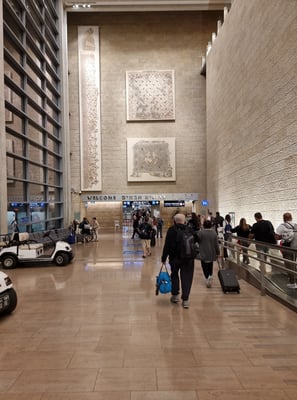

I messaged my host, who earlier informed me that there was a pride parade happening that day around in that locality, which meant it would not be accessible by public transport. The reply came fast, “the parade is over and you can take tram line 1. " Kinda a relief to me otherwise it would be a 20-min walk with my heavy duffel bag.
I checked in to my accommodation, and realised it is actually a capsule hostel despite the name bearing the word "hotel". The photo I saw on booking website looked kinda deceiving from what it really is: I thought of the Airbnb place I stayed in Manhattan which was a narrow but full-height space.
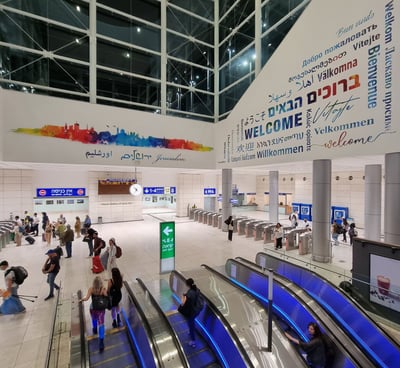

I slept till maybe 9-ish the next morning, and went out for breakfast to start my day. Certainly, bakery is a thing in Jerusalem and I found plenty of them here. I picked up a bag of three breads sprinkled with generous amount of poppy seeds for 10 shekels in Mea She'arim, an ultra-Orthodox Jewish neighbourhood. In such an ultra-Orthodox Jewish neighbourhood, it's impossible to misidentify a Jewish male: most were dressed in black from head to toe, with sidecurls trailing down in front of ears. Some of them held a Hebrew Bible on their hands.
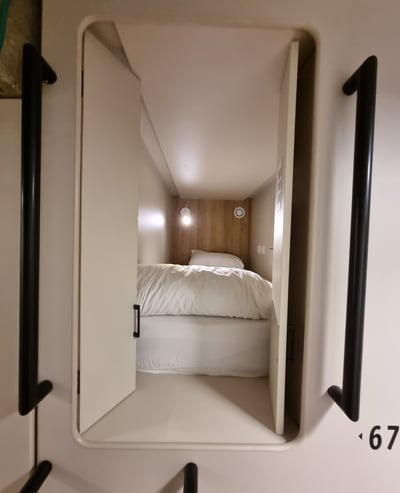

I went to a post office marked on Google Maps but found it closed. Museums close at 2pm on Fridays, so I jumped on a bus to the Israel Museum on top of a hill around 11am. At the reception, finding I was a bit lost about where to start, an old lady greeted me warmly and showed me the route and exhibition halls inside the complex. Without much time left for me, I decided to focus on the archeology part. There was once a united kingdom of Israel during the Iron Age, but it splited into two and where Jerusalem stands was the southern part, the Kingdom of Judah. The museum houses a massive and impressive collection of ancient artifacts, depicting the history of Israel since the first human settlement here. Intriguingly, compared to the abundance of collections from Canaanite, Israelite, Hellenistic and Roman eras, collections from Byzantine, Crusader and Ottoman eras looked extremely pale in comparison - which isn't really unsurprisingly, as a result of the fall of Jerusalem to Romans and the exile of Jews, which in return, shaped the sense of identity of Jews and legitimatised the claim to establish a Jewish nation named "Israel" at where it stand today, and there is nothing having more credibility and authority than a museum. (That being said, it might also be me running out of time on those later exhibitions as the museum was about to close. )
I left the museum at its closing time and headed towards my next stop, Ramallah.
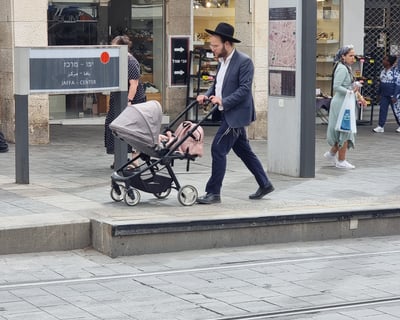

The Road to Jerusalem
When the Friday sunset marked the start of Shabbat, I stepped into the Old City from New Gate. What welcomed me, to my surprise, were open restaurants and bars with tourists eating and drinking there. After realising it's the Christian quarter, I continued my aimless wander through the narrow streets. Some unexpected rain drops wetted the stone-paved sloping ground, which further reduced the grip of my worn out soles.
The steel railing painted in green has little effect on guiding the loosely aligned crowd; once the bus comes, every one in front and after me, rushes to the bus. The door closed and the bus left. Ok, I'll wait for the next one. The next one came and the scene repeated. Ok, I must board the next one, forget about manners. The next one came and I managed to get one, but then I was told it would only goes to Kalandia checkpoint, where I must disembark, walk past the checkpoint and find my own way to Ramallah from there.
The third bus left. I started wondering if there's really a bus that would go to Ramallah. The fourth bus came and people started boarding. A man dressed in a T-shirt with bus company logo was talking to the driver. I asked him if the bus would go to Ramallah after he finished talking. He said, basically the same thing, that the bus only goes to Kalandia checkpoint. How long does it take from there to Ramallah then? 20 mins. The door closed again and he suddenly realised something, stopped the bus and askes me to get on.
I got on this bus. All seats were already occupied and some were standing on the corridor. I tried to secure myself by grabbing the edge of luggage rack above seats. The bus slowly proceeded north and made stops along the way. Some got off but more got on, making the bus even more crowded.
Finally the bus stopped at Kalandia checkpoint, the terminus. A staircase followed by an overhead bridge connects to the checkpoint building. I went through a few turnstile gates but did not see any officers. That's kinda strange.
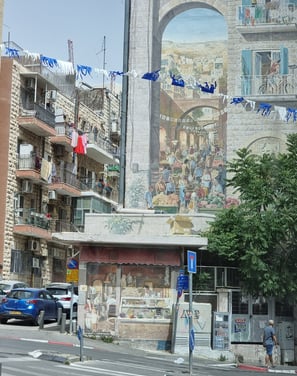

I stood for a while at a marble stele with Arabic inscription at Arafat's mausoleum. I made my way to the museum behind, but was again told it’s closed. Not to make my money in vain, I checked out the gift shop. Souvenirs inside shout "Palestine" loud and wave Palestinian flag hard to me.
I left the museum and strolled to the city centre. Friday is rest day for Muslims as well. Ramallah, didn't seem to be busy at all. KFC and Pizza Hut stand opposite Popeyes, but from what I observed, shawarma shops are where locals frequent.
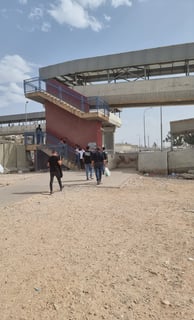

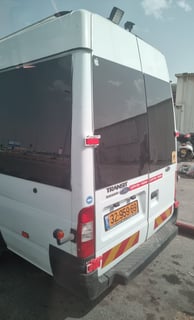

A minibus with a man shouting Ramallah came handy. 50 shekels, I confirmed my price and entered from the front door. The townships unfolded in front of my eyes. To be honest, there’s little surprise seeing those shopfronts. Those restaurants, minimarts, hardware shops with signboards in Arabic looked no different from what’s in other parts of Arabic world. Ramallah, other than being the capital of Palestine, didn’t ring a bell on me, yet. After all other passengers got off, I asked the driver to take me to Yasser Arafat Museum. He asked for another 50 shekels. Despite a relatively short walk, I would not have enough time before the Museum closes at 5pm, so I had to accept his offer. After we arrived, he asked, "five". What? "Give me five. " Oh that's what he means, Arab's sense of humour.
I was dropped off at a distance from the entrance of the museum, in front of a place guarded by armed security. I walked along white walls which seemed to enclose a government organisation, and in less than a minute I was at the entrance. I was about to enter the white minimalistic complex when a staff inside the cloakroom before the entrance stopped me. It’s closed, he said. I’ll need just 10 mins. Five he replied, opened my bag and glanced a bit and returned to me.
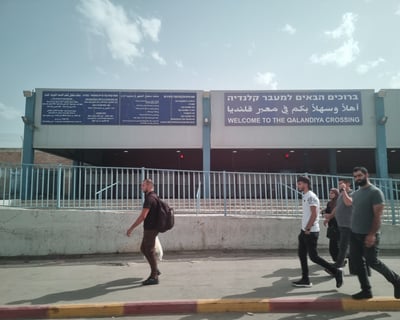

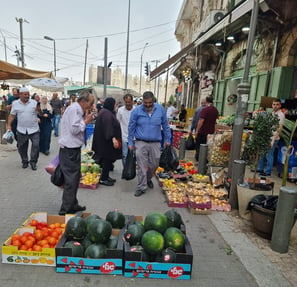

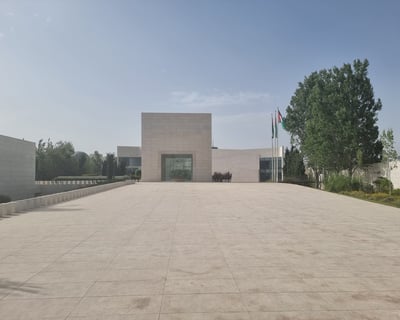

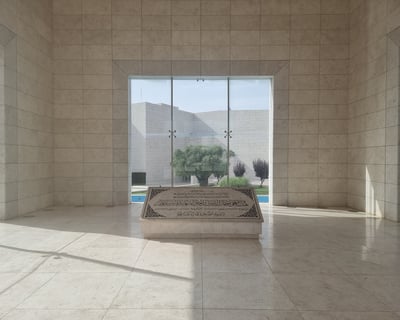

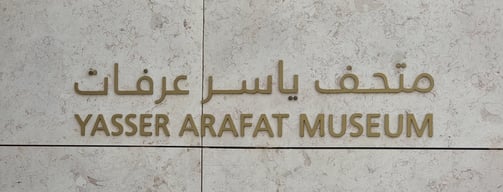

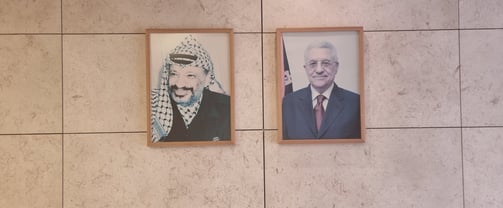

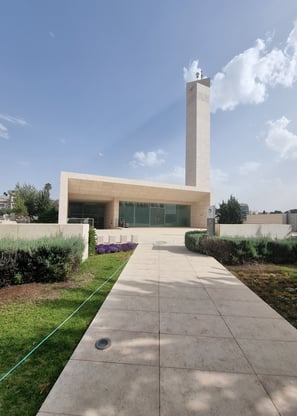

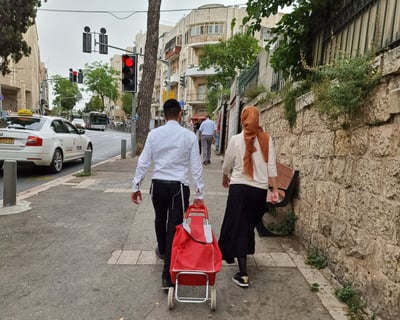

At the roundabout which is supposed to be the city centre, some statues of lion stand still and stare at the traffic, though there is hardly any. Different from the cliché "I ❤ XXX" seen in almost every touristy (and non-touristy) city (which, Jerusalem, cannot be spared), "We Ramallah" (We are Ramallah) is a strong and brave statement that echoes among Palestinians. Despite wars, blockades, embargoes, Palestinians hold up to their identity and never give up fighting for it.
Going down the road there is a monument in the middle of the road, of a man climbing up a flagpole with Palestinian flag. I was trying to find the best angle and the best timing to get small flags in the foreground with no traffic in the background. A young man came and offered to help me take a photo with the monument. I hesitated for a second, scared that he would just take my photo and run away. Luckily he didn't, and he returned to his corn stall after taking me photos. Despite their situation, people in Ramallah keep being optimistic and decorate their city with heart.
I read online that the best option going back to Jerusalem is taking an Israeli-plate taxi. But there wasn’t one. I was walking away from city centre and even Palestinian taxi became a rare sighting. I decided to walk to the nearby Millennium hotel and ask the reception to get me a taxi. The reception told me 3 hours lead time would be required for them to call a taxi from (Israeli-controlled) Jerusalem as Palestinian-plate taxi cannot get out. Running out of options, I asked the reception to get a taxi for me to the checkpoint. The reception told me the fare would be 40 shekels.
2 taxis arrived at the hotel outside the lobby. But after knowing my destination, both drivers were reluctant to take me. The first driver asked me to get on the other one after him, then the second driver pointed back; after seating myself in the front seat of the first taxi the driver asked me to seat in the back row, and he fled immediately after I exited the front row. Damn. My brain made the judgment of getting on the second taxi before the second driver had his chance of fleeing. Relunctantly the second driver started the engine, and uttered his anger and curse later on his phone. Luckily, he didn't speed like an Istanbul taxi driver. After we got to the checkpoint, he took the 50-shekel note from me without showing any intention of giving changes.
There are parking meters on the streets but I doubt anyone would actually pay.
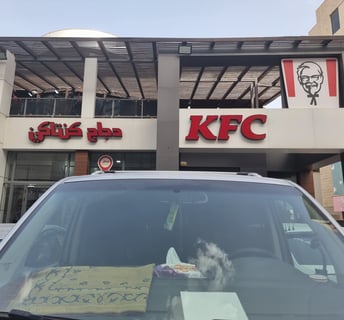

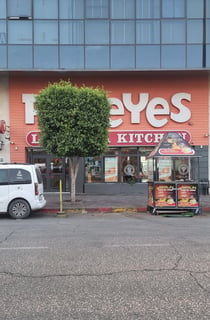

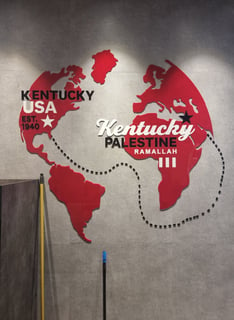

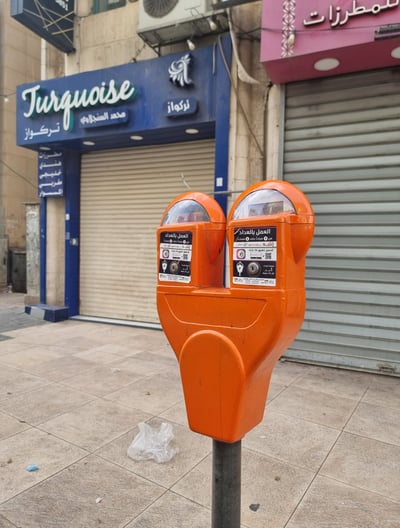

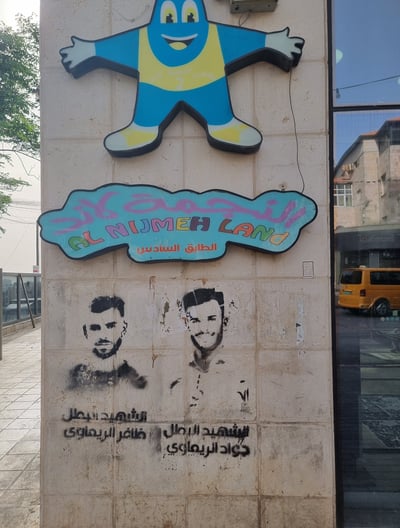

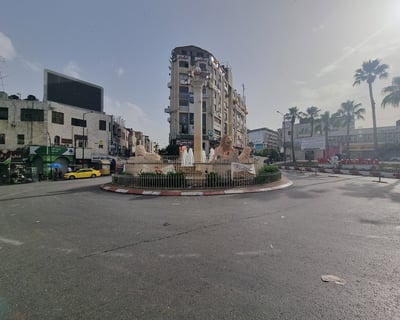


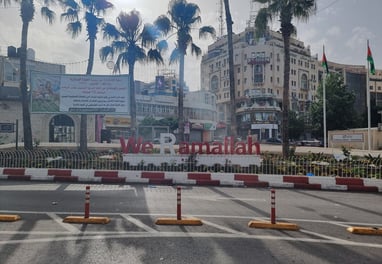
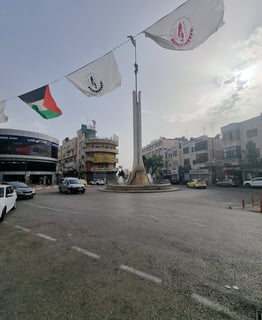

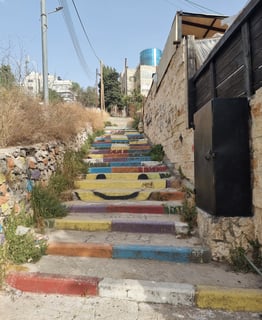

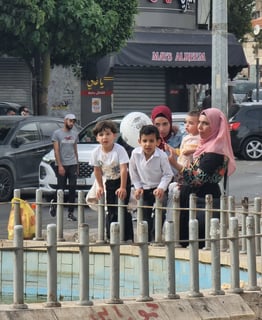

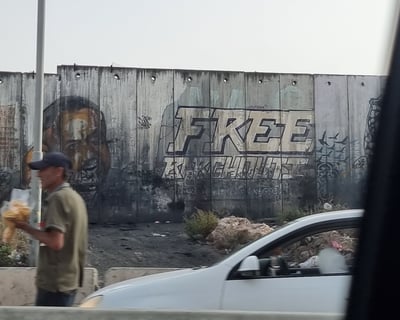

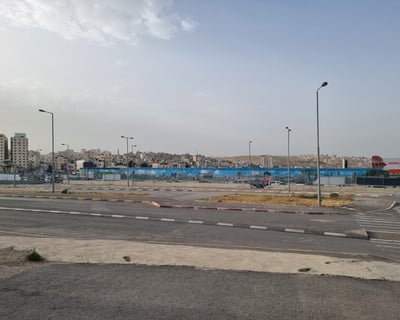

Mural of two male teenagers can be found along the street, they were killed by Israeli Defence Force in a violent clash.
The checkpoint felt quiet - secured by concrete walls 30ft high, only disrupted by blasts of engines, and suspected gunshots from distance. There’s a mural of Marwan Barghouti together with the slogan "Free Barghouti", who is a popular Palestinian political figure, arrested by Israel in 2002 and imprisoned since 2004.
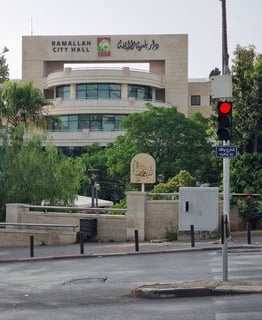

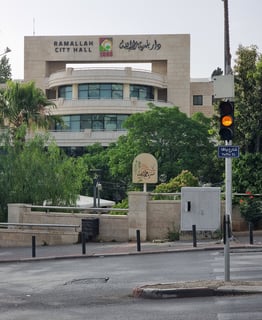

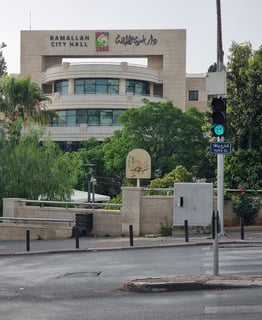

I handed in my passport through the narrow slip at the bottom of the shield separating me and the Israeli officer inside; the officer briefly looked through my Singaporean passport and returned to me. Then it was the same staircase and long overhead bridge, but from another direction. Bus 271 was waiting there; I tapped my public transport card, which only had Hebrew on it and I don't understand a single word, and a receipt in Arabic was printed from the terminal.
The ride back to East Jerusalem was so uneventful that I almost left my memory of past 3 hours behind. On the bus, I made my decision to note it down so I'd not forget.
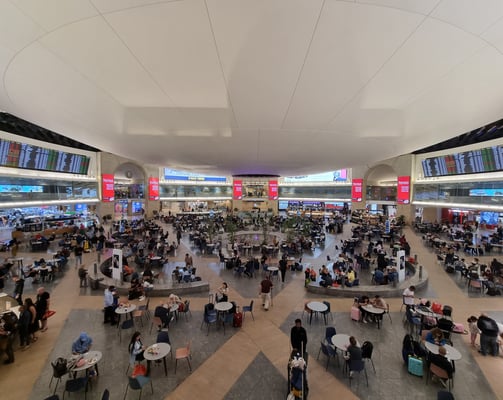

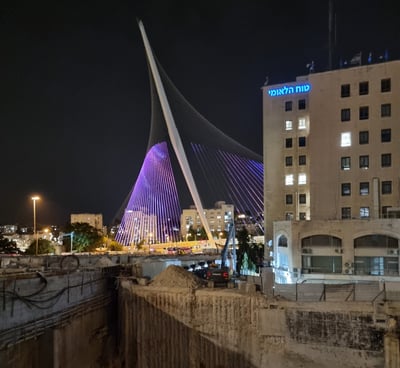



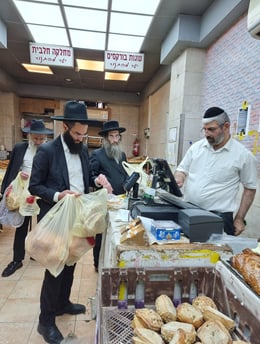


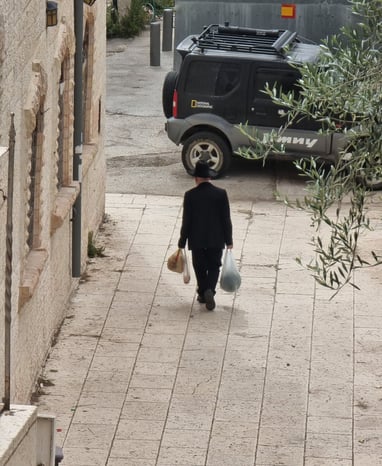
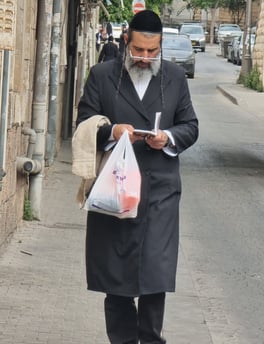

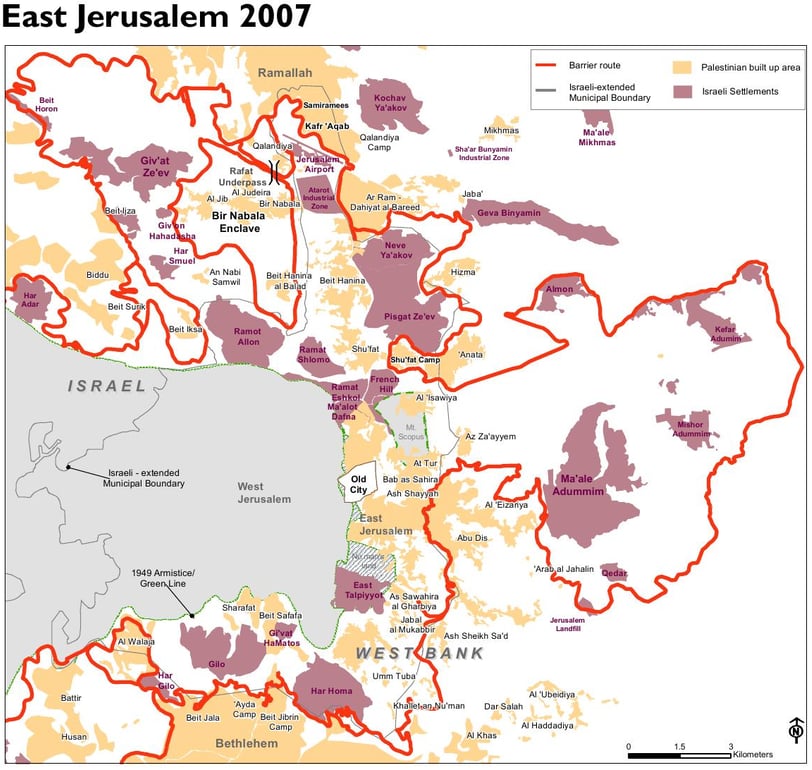

Only 1 of the 3 entrance lines was open and it was a wandering route through full height steel partitions. More turnstile gates followed, finally I arrived at the small hall before the real "checkpoint" where there were Israeli officers checking travel documents valid for entry to Israel: only a few Palestinians could get them so they could earn their livings from working in Israel; the rest are stuck inside the "archipelago" where they are, a result of Israel's consistent effort to chase Palestinians out of the territory demarcated even by the controversial 1947 UN partition plan (which many Arabic countries felt unfair and lead to prolonged wars against Israel in the following decades), and establish settlements of Israelis. There was a sign reading "No drinks allowed", and leftover plastic bottles stood by the wall. In the coolness inside the complex was not only the result of good heat insulation, but also the feeling of being stuck, as people would say, in an "open air prison".
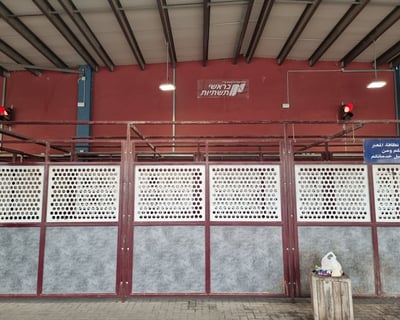


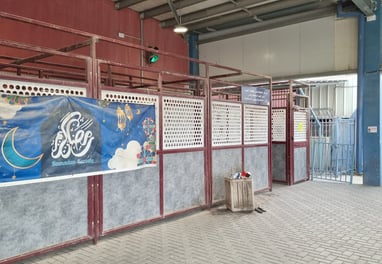
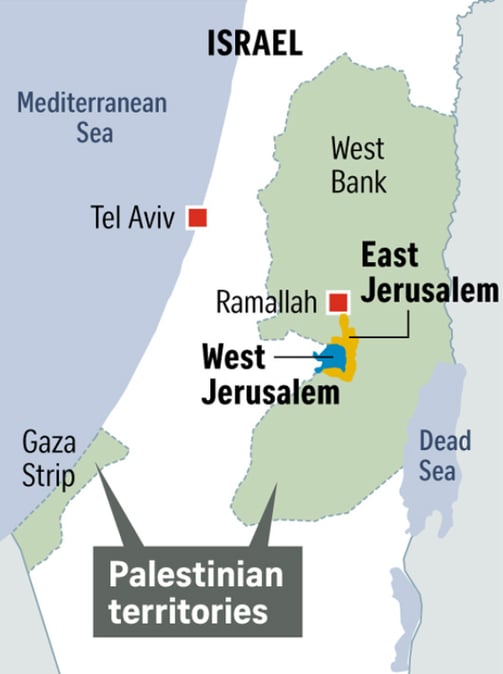

The Road out of Israel
I’ve heard enough stories of the notorious pre-check-in interrogation conducted by Israeli Intelligence agency Mossad agents, which could last forever until your flight has departed. Budgeting for this, I arrived at Tel Aviv airport 4 hours before the scheduled departure time of my flight. The conversation went on as expected, until the last question, “Do you have a firearm with you?" "Why would I have that? " I gave my rhetorical answer in an astonished tone. Then conversation lasting less than 10 mins, and a sticker with a string of digits starting with '5' preceded by a Hebrew letter on it was stuck on my passport cover. I later learnt from my friend that the first digit stands for risk assessment result. On a scale from 1 to 6, 1 means totally safe, and 6 means terrorist.
After going through a "security check" which was all form but substance - metal detector gate and X-ray scanner were powered off as Shabbat began - the Israeli soldier manning the ingress merely asked where I come from and glanced inside my small backpack for a second, and I was allowed into the Western Wall area.
Shabbat means a lot to Jews, and praying by the Western Wall, the only remnant from Second Temple housing the Holy of Holies, is an important practice. During Shabbat, only Jews can access the Western Wall, and photography is not allowed, enforced by volunteers patroling around. People who thought they were taking out their phones and cameras stealthly got caught and warned immediately when they tried at raise their hands above the 5’ high blocking screen. I used to hear the story that Jews would weep at the Western Wall over the destruction of their two Temples, but the atmosphere on this Shabbat night was lively. A partition in the centre separated male and female prayers, and guys and girls on each side went on their activities, including reading the Tanakh (Hebrew Bible), singing, etc. It looked more like gathering rather than mourning.
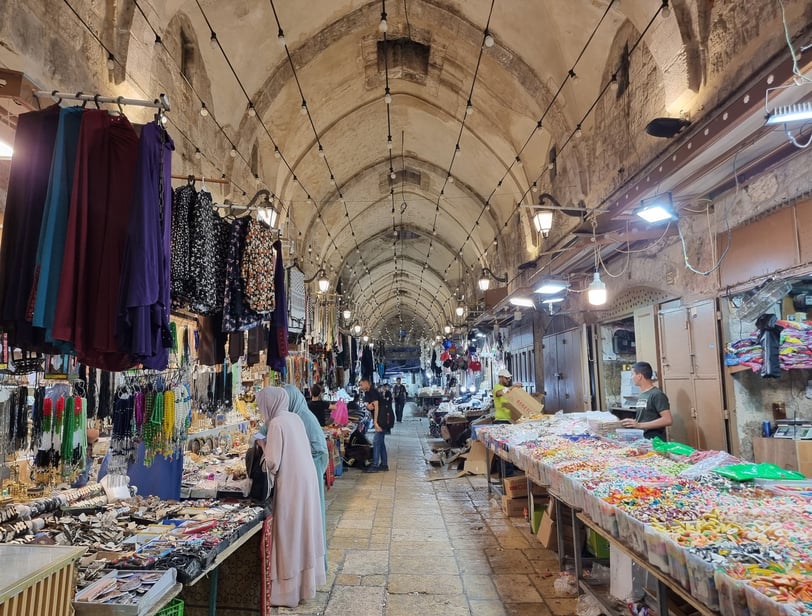

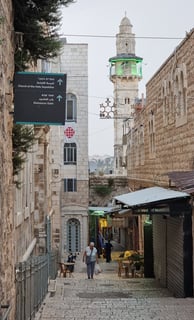

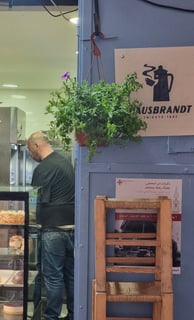

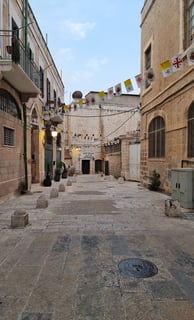




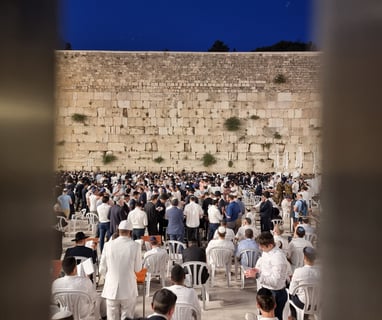
I left the Old City from Dung Gate and walked back to my accommodation along the southern rim of city wall. Near my accommodation, there were one restaurant-bar, one pizzeria and one burget joint open for business.
As I continued walking towards East (where the Western Wall stands), after one arch my surroundings changed completely. I was in the Muslim quarter: it's a night bazzar scene that resembled Istanbul's. Shops on two sides of narrow lanes sell everything from poultry to fish, grocery to clothing, but the most splendid ones are candy shops, from golden baklawa sprinkled with pistachio bits, to liquorice in bright and bold colours, to chocolate wrapped in all shapes imaginable.
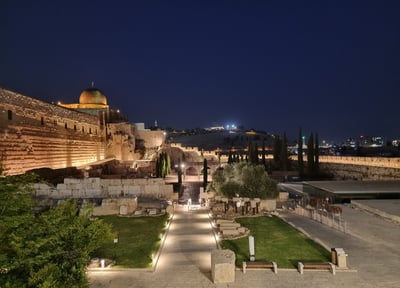

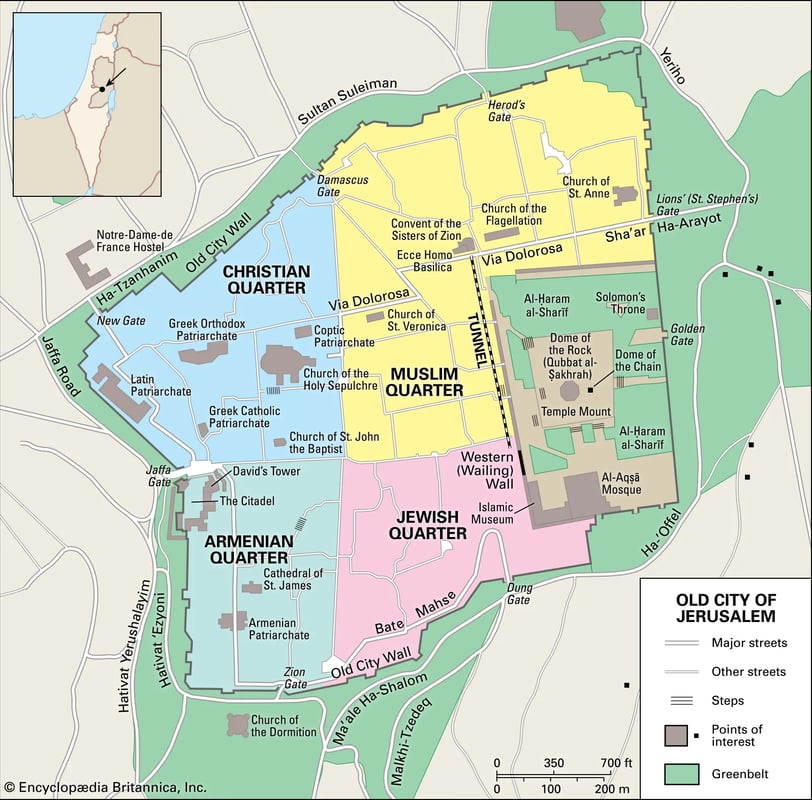

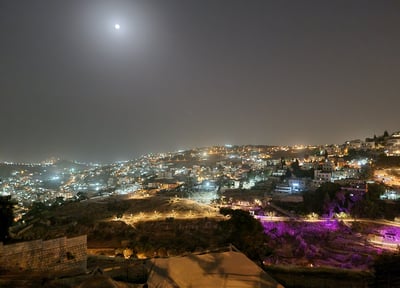

I went back to the Old City the next morning to continue my exploration. The Old City comprises of four demographic quarters: Christian, Muslim, Jewish and Armenian. While each quarter has its own character, within naturally grown boundaries, sporadic irregularities still occur. It's not uncommon that you walk out of a Christian church and raise your head to find a minaret within your eyesight. At the Muslim quarter, even on Saturday morning, is a live city: voices of bargaining and touting echo under rock arches, smells of delis and spices linger in the air.
West and East Jerusalem have opposite street scenes on the days of Shabbat: quiet vs lively; and their residents hardly mingle with the other side. Only on the narrow streets inside the Old City, one could spot a scene that Jewish father taking his daugher brisk-walked past between two elder Muslim women. Breathing the air mixed with smells of fresh vegetable and fried falafel, this scene felt so surreal to me.
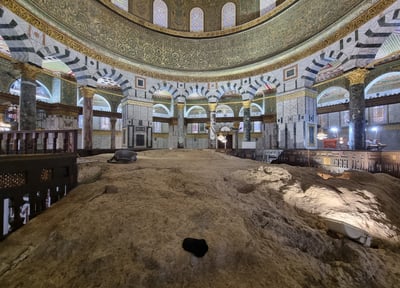


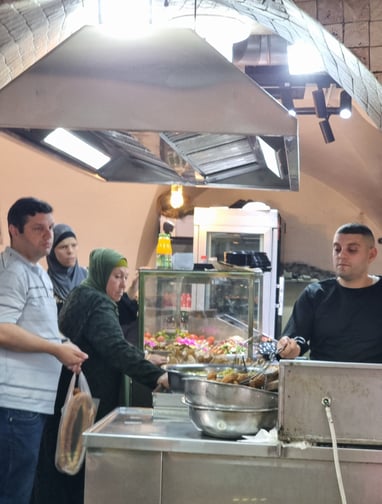
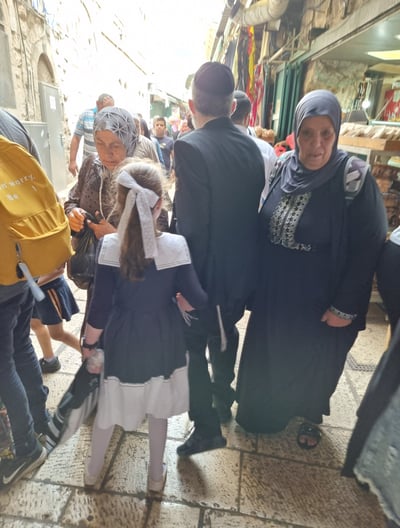

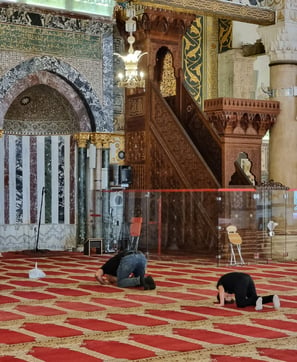

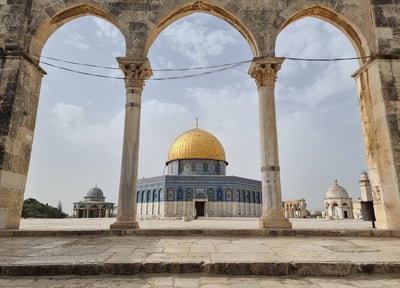

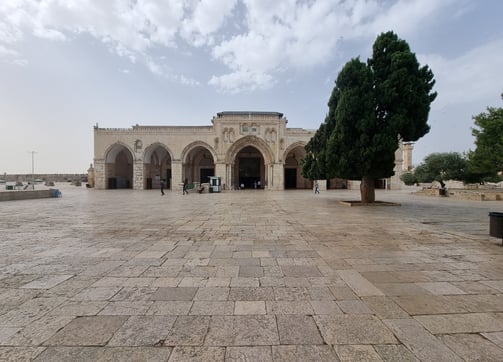

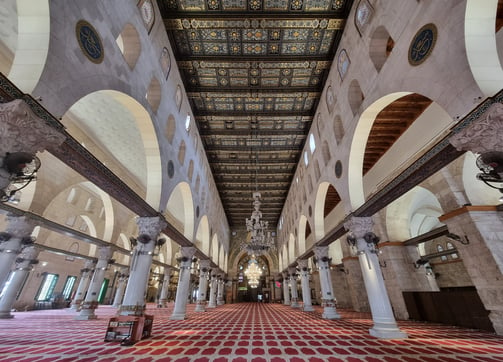

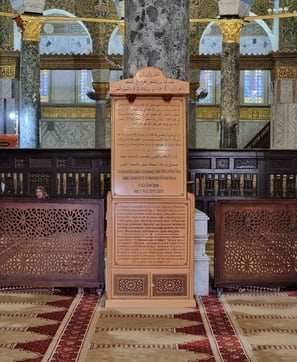

The road sign to Temple Mount (Haram al-Sharif in Arabic) lead me to the Western Wall again. When I asked the first time the Israeli Police officer guarding the entrance to the Western Wall, he didn't answer. I asked for the second time, claiming myself a Muslim, and he reluctantly pointed the way.
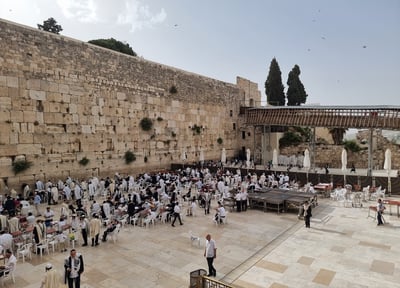

I got my boarding pass from the check-in counters, and proceeded to security check. The staff looked through my passport to find the sticker; when finally spotting the number '5', she directed me to the separate security check zone besides, where a thorough examination awaited.
The female staff raised her waist for time on her smart watch, before starting to check my bags. Every item inside my bags were taken out and swabbed by explosive test paper. Every test paper was then put into a explosive test machine for analysis. After 18 minutes, the check was finally completed.
I didn't finish all my instant noodles stock in preparation for Shabbat, so I thought about clearing one before my flight departed. I checked around only to find room temperature water dispenser available. I figured out I could get something from a café and ask for some boiled water. Before I was about to ask, a young male staff who seemed to read my mind helped me ask for a cup of hot water for free. I said thanks to him, although I don't know if I should be for verifying his stereotype.
My flight called for boarding earlier than I thought. On the boarding bridge, I saw a poster reading "Welcome to Israel. Your life will never be the same. " It's true, I saw people and things, including religious believers, worldly streets, history-torn walls, and the divided reality, which I could never imagine if I did not come here.
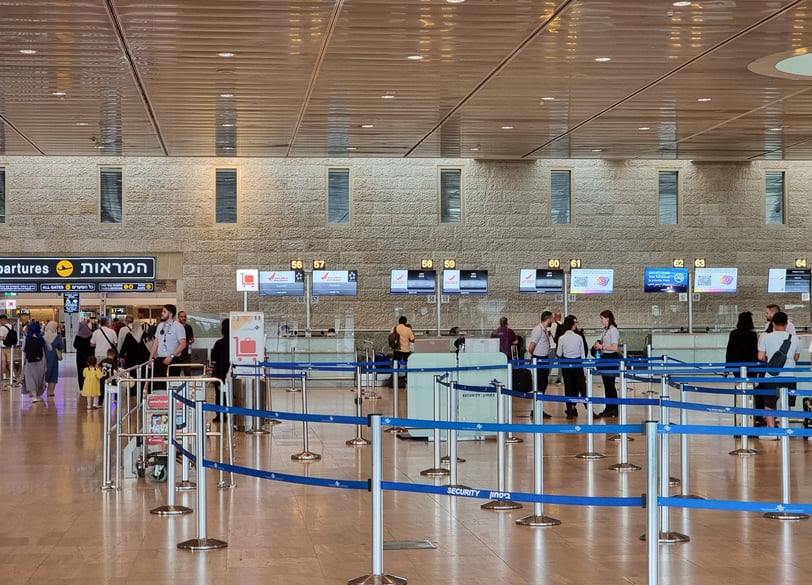

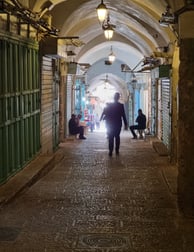

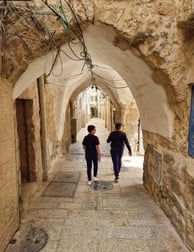

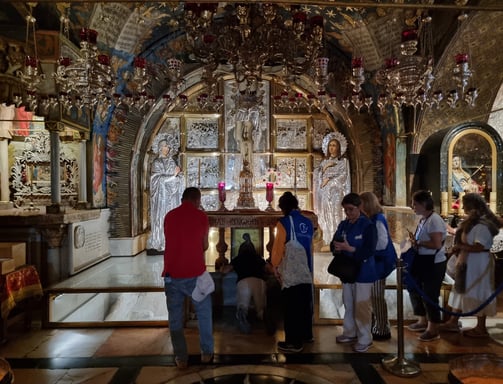

After getting stopped by the Israeli Police officers guarding the entry to the Temple Mount and claiming myself a Muslim, I finally entered Temple Mount.
It is the site where the Second Temple sat before getting destroyed by the Romans in AD 70, which was holiest place in Judaism and was only allowed to be accessed by the highest priests once a year to perform sacrifical offerings. More than 600 years later, the Al-Aqsa Mosque was built on the Temple Mount. In Islam, it's the second oldest mosque and the third holiest site, where the Islamic prophet Muhammad ascended to heaven.
Being both a holy site in Judaism and Islam, it is often sparking conflicts between Israel and Palestine, because of both reality and religion. Judaism believes in rebuilding a Third Temple on the ruins of the Second Temple i.e. Temple Mount, which lead to many attempts by extremists to blow up the Al-Aqsa Mosque on Temple Mount. On the other hand, whenever rumours of rebuilding a Third Temple come up, Palestinian's riots break out. Consequently, Israel controls access to Temple Mount strictly, banning Jews from entry, and impose restrictions on the access for Palestinians from time to time during conflicts.
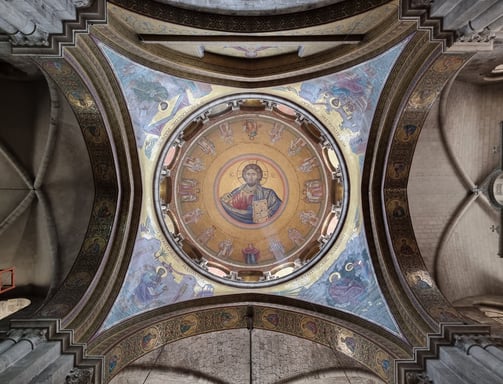

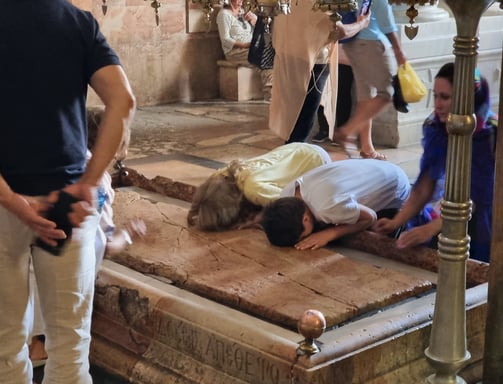

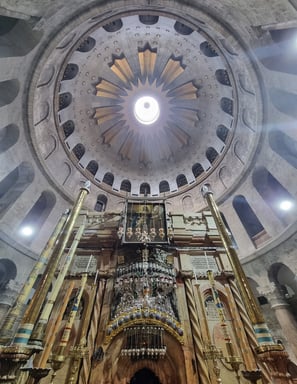

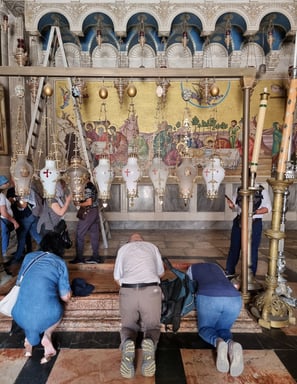

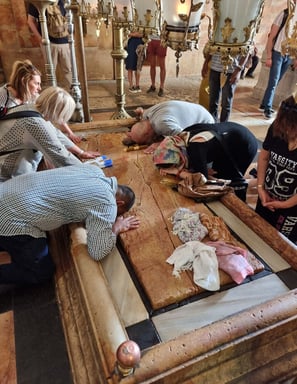

Left: how it looked like on booking website
Right: how it actually looked like
I was asked of my religion again upon exiting the Temple Mount. I walked down to the Christian Quarter, to the Church of the Holy Sepulchre - I was asked by another visitor when I was on the way to Temple Mount earlier. It is considered the holiest site and the most important pilmigrage site destination in Christianity. It contains the site where Jesus was crucified, and Jesus's empty tomb where he was buried and then resurrected.
Immediately after the entrance, people knelt down and put their forehead and hands on the stone where Jesus's body was believed to be anointed on it, although the tradition only stemed from crusader era and the current stone itself was added in 19th century's reconstruction.
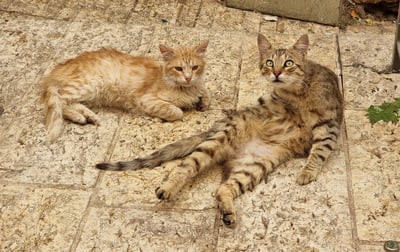

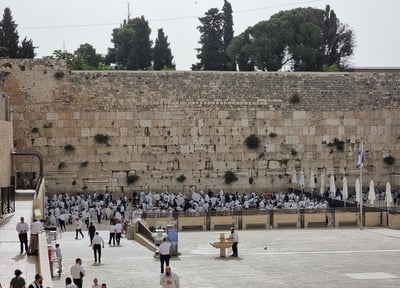

The Old City is still a living city: there are grocery, barber shops, clinics and churches. The residents, besides humans, are deities and cats. It's not a tourist attraction, but a living display of anthropology.
I headed back for my afternoon Dead Sea tour. After coming back from sun-scorched Dead Sea, I flagged a taxi to the airport. It's an expensive ride, but thank god, at least we have Arab drivers working on Saturdays, otherwise I would not be able to make back to the airport.
Afterwords
The holy status of Jerusalem was forged by the half-historical, half-epic Bible which was referred by different names in different historical records, tragedised by its falls and destructions by different conquerors, given prominence by Christianisation of the Romans, and finally sanctified by pilgrims of different religions. The holy city doesn't belong to any one but belongs to everyone. Everyone will be able to find their church here and pray to their own god.
Jews are both miserable and lucky: Armenians suffered from genocide of comparable scale but didn't receive as much sympathy or support; Kurds and Uyghurs don't have their own states till today; Tibetans lost their nation and freedom to practice their religion. After Six-Day War, Israel strengthened its position and annexed more land from the proposed area allocated to the Arab State in Resolution 181. Israel has sinced being expelling Palestinians from these areas, and establishing Jewish settlements there. In that sense, Israelis are blessed to live on the Land, but may they not forget others who live here as well.
